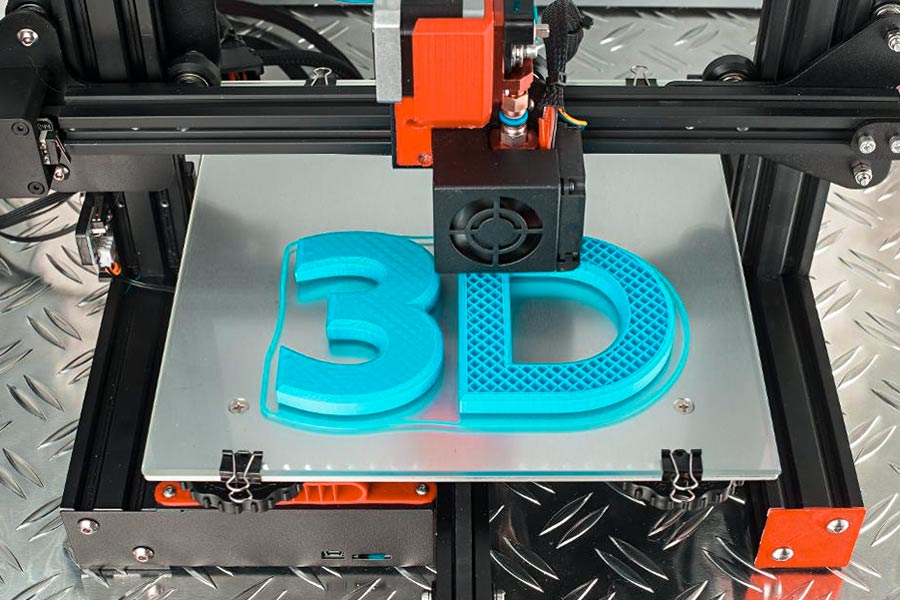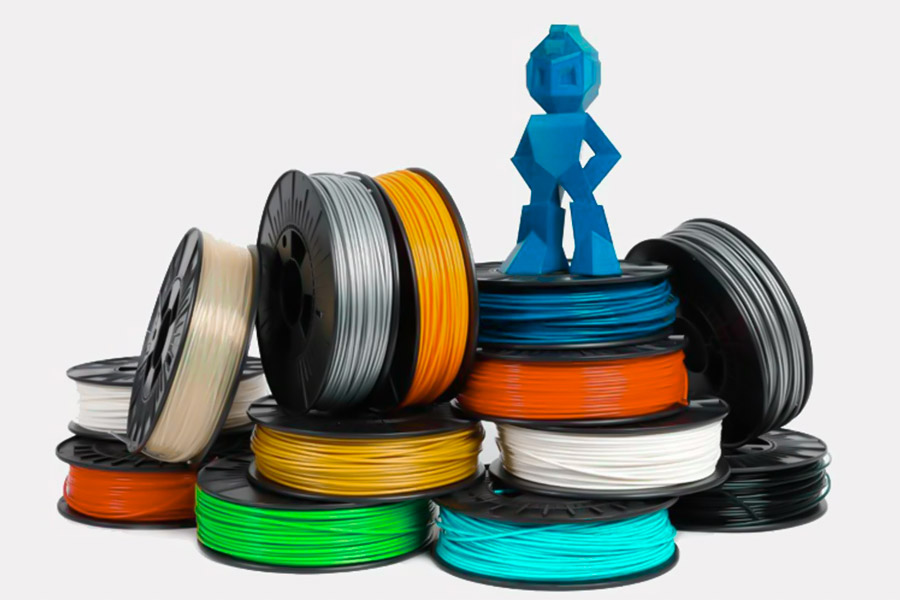3D印刷技術は近年急速に発展しており、該当する材料の範囲も拡大しています。 common pla and abs to High-Performance nylon and Peek その中で、ポリカーボネートは、高強度で高熱耐性の熱可塑性物質として、3Dプリントに適していますか?印刷するのはどれくらい難しいですか?どの分野で独自の利点がありますか? 1。機械的パフォーマンスのブレークスルー:通常のエンジニアリングプラスチックをはるかに超えています ポリカーボネートの機械的特性は、3D印刷材料の間で際立っています。重要なデータ比較: これらのデータは、PCが耐衝撃性、高温抵抗、構造強度の観点からABSなどの従来のエンジニアリングプラスチックを上回り、特に高負荷と高い動的応力を伴うアプリケーションシナリオに適していることを示しています。
2。業界アプリケーションシナリオ:実験室から実際の産業環境まで (1)自動車製造:エンジンコンパートメントブラケット(合格SAE J2522振動テスト) (2)産業用フィクスチャ:損失なしに5000回以上の繰り返しクランプ 従来の金属備品はかさばってコストがかかりますが、 PCの自然な炎の遅延特性
3。プロセスの課題とソリューションの印刷 PCのパフォーマンスは優れていますが、その3D印刷は次の困難を克服する必要があります。
<テーブルスタイル= "境界線 - 崩壊:崩壊;幅:100%;境界線 - #000000; height:183.859px; border-width:1px;" border = "1">
ポリカーボネート(PC)は優れたエンジニアリング特性を持っています 3D印刷中。高品質のPC部品を安定に印刷するには、温水温度、チャンバー環境、材料冷却速度を正確に制御する必要があります。以下は、産業的に証明されたソリューションです: 1。ホットベッドコントロール:基本的なソリューションから高度なソリューションまで (1)温度設定:120-140°Cが重要なしきい値です 通常のホットベッド(<100°C): PCは速すぎるとすぐに収縮します。
最適化ホットベッド(120-140°C):冷却速度を遅くし、収縮率を0.3%未満(射出成形部品のレベルに近い) (2)表面処理:PEI +ナノセラミックコーティング 測定データ: 純粋なPEIボード: 50mm×50mmの正方形の印刷、エッジワッピング高さ1.2mm pei+nanoコーティング:同じ条件下での反りの高さ<0.2mm 2。チャンバー温度管理:閉じた暖房のための産業用グレードソリューション (1)温度要件:ワーピングを効果的に抑制するための≥70°C (2)加熱溶液コストの比較 費用対効果の高い選択肢: 科学研究/小型バッチ:修正された熱気循環システム(80°Cの一定温度、コストは約3000) 生産レベルのニーズ:産業機器の直接購入(Intamsys Funmat HTなど) 3。材料とプロセスの共同最適化 (1)印刷パラメーターの黄金の組み合わせ (2)防止防止設計技術 4。典型的なケース:自動車摂取マニホールドプロトタイプ 課題: 解決策: 結果: 1。化学リスク分析 ビスフェノールA(BPA)リリース ポリカーボネート(PC)は、印刷中にBPAのトレース量を放出する可能性があります、しかし<0.1ppm(<0.1ppm(<0.1ppm(<0.1ppm)標準)。 比較データ: 超微粒子(UFP)汚染 PM2.5印刷中の濃度は、200μg/m³に達することがあります(75μg/m³の国家標準の平均制限の2.6倍) 主なコンポーネント: 2。必須の安全対策 換気およびろ過システム 3.操作仕様 装備する必要があります: 4.防止行動 1。主要な機器パラメーター要件 (1)高温システム (2)機械的特性 (3)安全構成 2.推奨モデルリスト (2)準産業グレード (3)産業グレード 3。修正計画の比較 購入決定 1。水分含有量のコア制御標準 安全性のしきい値 は0.02%未満でなければなりません(測定された水分含有量が0.1%の場合、引張強度は15%減少し、層間結合力が40%減少します) 検出方法: Karl Fischer Titrator(精度0.001%) 簡単な方法:105℃オーブンの計量法(エラー±0.05%) 乾燥装置の比較 キーパラメーター: 80℃4時間乾燥(通常のPC) 100℃乾燥して2時間乾燥(炭素繊維強化PC) 2。ストレージソリューション 小さなバッチ:シールボックス +デシカント(低コスト) 大型バッチ:真空パッケージ +湿度監視(ロールあたり + 2ドル、スクラップレート↓90%) 警告しきい値:30%RH(再乾燥する必要があります) 3。乾燥プロセス検証方法 最初の層の接着を観察してください:「ポップコーン」泡が乾燥が不十分なときに現れます 音を聞いて品質を識別します。完全に乾燥したPCの音は、押し出されたときに連続して安定しています 実験室レベルのテスト DSC(微分スキャン熱量測定):水分吸収のピークが消え、標準が満たされます ftirスペクトル:-oh3400cm⁻¹<5% 4。極端な環境対応戦略 高湿度領域(RH> 70%) 乾燥直後の真空シール 印刷時のオンライン乾燥給餌システム(PrintDry Proなど)に接続 長期シャットダウン 窒素の貯蔵(酸素含有量<100ppm) 分子ふるいデシカントを使用します(水分吸収におけるシリカゲルの3倍) 5。コスト最適化計画 推奨オプション: 小さなスタジオ:オーブン +真空パッケージの乾燥(最適な総コスト) 大量生産:統合乾燥および給餌システム(AMS互換ソリューション) 1。失敗の原因の分析 結晶性の違いの問題 その他の影響因子 2。解決策 印刷パラメーターを最適化 冷却の改善 構造設計を強化します 3。緊急修理措置 化学処理方法 熱気修理技術 定期的な検査
この記事では、 3D印刷のポリカーボネートの実現可能性を調査し、印刷プロセス要件、材料特性、典型的なアプリケーションシナリオを分析し、読者がこの高等教育の材料におけるこの高官の課題と課題を理解するのを助けます。
ポリカーボネートが究極のエンジニアリンググレード3D印刷材料な理由
パフォーマンスインジケーター
ポリカーボネート(PC)
abs(比較リファレンス
改善
衝撃強度
≥80kj/m²
〜15 kj/m²
5回以上
熱変形温度
135°C
75°C
60°C高い
引張強度
60-70 mpa
40-50 mpa
30%高
曲げ弾性
2.3-2.5 gpa
1.8-2.0 gpa
より良い剛性
高温の高振動エンジンコンパートメント環境では、通常のプラスチックは変形または破損する傾向があります。 PC 3D印刷部品が正常に渡されました:

課題
solutions
高温反り
閉じた一定温度チャンバー + 120°C加熱ベッド
弱い層間接着
ノズル温度≥290°C、冷却ファン速度を下げます
吸湿性は泡を引き起こします
80°Cで4時間乾燥し、密閉されたストレージ
高い剛性構造が必要
100%充填率 +リブの設計
ポリカーボネートのゆがんだ悪夢を征服する方法?
温かいベッド表面
接着
該当するシナリオ
普通のガラス
★★☆
小サイズの低応力パーツ
peiボード
★★★
中程度の複雑さ部品
pei + nano-ceramicコーティング
★★★★
大/高強度の構造(300%より良い接着)
solution
cost
温度制御精度
該当するシナリオ
diy加熱ボックス(PTC +サーモスタット)
¥ 200-500
±5°C
小さなデスクトップマシン
工業用グレードの一定温度チャンバー(Stratasysなど)
¥50,000+
±1°C
大量生産
修正されたアクティブヒーティングシステム(熱い空気循環)
¥ 2000-8000
±2°C
中サイズのプロトタイプ開発
PC印刷ヒュームの真実は何ですか?
solution
ろ過効率
コスト範囲
通常の排気ファン
30%
¥100-300
hepaフィルター(H13グレード)
99.95%
¥ 500-1500
hepa+activated Carbon Composite
×99.97%
¥2000+

どれがポリカーボネートを処理できるか
(1)エントリレベル(ニーズの変更)
モデル
利点
必須修正
cost
creality cr-6 se
コミュニティサポートは完了しました
dd加熱チャンバー +スチールノズル
¥2000+
prusa i3 mk3s+
オープンソースと拡張可能
高温温度ベッド(120°C)
¥ 3000+
モデル
コア利点
該当するシナリオ
価格
qidi tech x-plus
元の閉じた一定温度チャンバー(80°C)
中規模の機能部品
¥8000-12000
ultimaker s5
デュアルノズルサポートPC+水溶性サポート
複雑な構造プロトタイプ
¥ 30000+
モデル
認証標準
特別な機能
price
stratasys f370
ISO 10993医療グレード認証
PC-ISO材料を直接印刷できます
¥ 500,000+
intamsys funmat ht
チャンバー定数温度100°C
PC+Peek Mixed Printingをサポート
¥ 200,000+
修正プロジェクト
デスクトップ効果
産業効果
コスト差
加熱チャンバー
一定温度60-70°C
一定温度80-100°C
¥500対5000
ノズルアップグレード
硬化スチールノズル
タングステンスチールダイヤモンドコーティングノズル
¥100対2000
排気システム
外部HEPAフィルター
統合された負圧排気
¥ 300 vs ¥10000

PCフィラメント乾燥プロトコルを最適化する方法
機器タイプ
温度均一性
除湿効率
該当するシナリオ
Food Dehydrator
±5℃
0.5%/h
一時的な緊急事態
プロの乾燥オーブン
±1℃
2%/h
連続生産
真空乾燥オーブン
±0.5
5%/h
医療/航空グレードの材料
plan
機器コスト
エネルギー消費コスト/月
適格料金保証
通常の乾燥オーブン + ziplockバッグ
$ 150
$ 8
85%
真空乾燥 +インテリジェント監視
$ 600
$ 15
99%
産業除湿室
$ 5000+
$ 100+
99.9%
なぜPC層の結合が失敗し、修正方法は?
4。毎日のメンテナンスの提案
材料選択に関するアドバイス
- 印刷パラメーターは、小さな部品に対して優先的に調整されます
- 一定の温度機器を装備する必要があります
- 重要なコンポーネントの補強材の使用を検討してください
5。予防策
- 化学処理を処理するときは予防措置を講じる必要があります
- 熱気修理の温度制御に注意を払ってください
- 定期的なメンテナンスは、ほとんどの結合問題を防ぐことができます
上記の測定値は実際のテストによって検証されており、PC印刷における層間結合の問題を効果的に解決できます。
どのポストプロセッシングがPC部品を変換しますか?
1。化学研磨
ジクロロメタン蒸気処理:30〜90秒、表面粗さは15μmから0.8μmに減少しました
爆発的なワークショップが必要です(Ex d iib t4 Standard)
2。熱処理
アニーリングと強化:130℃/4時間、引張強度+25%
寸法報酬式:x/y軸の倍率0.25%/mmの厚さ
3。機械加工
CNC仕上げ:炭化物ツール、8000-12000rpm
超音波研磨:15〜30分間のセラミック研磨治療
4。表面処理
真空コーティング:2-5μm金属コーティング(Al/Cr/Tin)
レーザーテクスチャリング:1064nmレーザー彫刻アンチスリップテクスチャ
5。キーコントロール
処理する前に
99.9%IPAでクリーニングする必要があります
環境制御:23±2℃、rh<40%
PCは航空宇宙のPEI/PEEKとどのように比較されますか?
1。キーパフォーマンスの比較
<テーブルスタイル= "ボーダーコラプス:崩壊;ボーダーカラー:#000000;幅:100.659%;高さ:188.25px;" border = "1">Peekの疲労寿命はPCの3倍です(10〜サイクルテスト)
2。コストパフォーマンスバランスポイントの選択
エコノミープラン(PC)
該当するシナリオ:キャビンインテリア、非荷重ブラケット
利点:
- 低い処理コスト(高温プリンターの必要はありません)
- Light transmittance optional (window shading layer)
Mid-tier Solution (PEI)
Applicable scenarios: electronic equipment cabins, ventilation ducts
Advantage:
- Passed DO-160G §26 flame retardant test (vertical combustion≤ 15 seconds)
- 10% lighter than PC
Premium Solutions (PEEK)
Applicable scenarios: hood assembly, hydraulic valve body
Advantage:
- Certified to FAA 25.853 for fire protection
- Jet fuel resistance (no swelling after 1000 hours of immersion in JP-8)
3. Key path for airworthiness certification
Medical-grade certification of PC (ASTM F2971-13)
Cycle: 6-8 months
Required test items:
- Cytotoxicity (ISO 10993-5)
- Hemolysis test (ASTM F756)
DO-160G test of PEI/PEEK
Flame retardant solution:
- Add 30% glass fiber (pass 60° tilt burning test)
- Surface spray ceramic coating (withstand 1100°C short-term burning)
Electromagnetic compatibility:
Carbon fiber filled PEEK (shielding effectiveness ≥ 60dB)
Selection decision
- PC is preferred: low temperature, non-critical parts, cost-sensitive projects
- PEEK must be used: engine area, fire protection requirements ≥ FAA 25.853 standard
- PEI is a compromise: electronic equipment protection, medium temperature load

要約
Polycarbonate is not only capable of 3D printing, but also performs well in applications that require high strength and high heat resistance. Although it has high requirements for the printing environment and technology, with the advancement of 3D printing technology and the improvement of special PC filament formulas, polycarbonate is becoming one of the important material choices for professional-grade 3D printing. For users who pursue high-performance printing results, mastering PC printing technology will greatly expand the application range of their 3D printing.
免責事項
このページの内容は、情報目的のみを目的としています。サードパーティのサプライヤーまたはメーカーがLongShengネットワークを通じて提供するパフォーマンスパラメーター、幾何学的許容範囲、特定の設計機能、材料品質と種類または出来事は推測すべきではありません。これはバイヤーの責任ですこれらのパーツの特定の要件を決定するために、パーツの引用を求めてください。
lsは、業界をリードする会社ですカスタム製造ソリューションに焦点を当てています。 5,000人以上の顧客にサービスを提供している20年以上の経験により、高精度 cnc machining 、 LSチーム
詳細については、href = "https://lsrpf.com/"> www.lsrpf.com
FAQS
1.Is polycarbonate difficult to 3D print?
Yes, polycarbonate is more difficult to 3D print than polymers such as PLA or PETG.Polycarbonate requires high extrusion and platen temperatures, typically between 260° and 290°C, with some filaments requiring temperatures as high as 320°C, and a heating plate temperature of at least 110°C. Polycarbonate is also prone to warping, so adhesion to the sheet is critical, and care must be taken to control temperature fluctuations during printing to avoid deformation or cracking. Despite this, polycarbonate is widely used on FDM printers because it allows for the design of complex parts with good thermal, mechanical, and optical properties.
2.What materials cannot be 3D printed?
Currently, wood, glass, and parts with specific intellectual property protection are generally considered unsuitable or not recommended for 3D printing.Wood: Due to the natural fiber structure and physical properties of wood, it is not currently possible to directly 3D print it.Glass: Glass is difficult to achieve in 3D printing because it has an extremely high melting temperature and is prone to cracking after cooling.Parts with intellectual property protection: Even if the design and material are suitable for 3D printing, copy printing may not be allowed due to intellectual property protection considerations.It should be noted that as 3D printing technology continues to develop, more materials may become printable in the future.
3.Is polycarbonate printing safe?
Polycarbonate 3D printing is safe when done correctly, but there are some potential risks to be aware of.Polycarbonate itself is tasteless and odorless, harmless to the human body, and meets health and safety standards. However, during the 3D printing process, due to the need for high-temperature heating, there are the following safety hazards:Burn risk: The printer nozzle operates at a high temperature, and touching it when it is not fully cooled may cause burns.Toxic gas release: At high temperatures, polycarbonate may release some harmful gases, so it is recommended to print in a well-ventilated environment.To ensure safety, it is recommended to wear protective gloves to avoid unnecessary burns and place the machine in a place where it is not easy to touch, especially if there are children at home.
4.At what temperature can polycarbonate be 3D printed?
The extrusion temperature for polycarbonate 3D printing is usually between 260° and 290°C, and some filaments even require temperatures as high as 320°C, while the heating plate temperature must reach at least 110°C.In addition, since polycarbonate is hygroscopic, it is necessary to ensure that the material is kept in a dry place before printing to avoid printing failures or reduced performance of the final part. During the printing process, it is also necessary to pay attention to controlling temperature fluctuations to avoid deformation or cracks.
リソース







